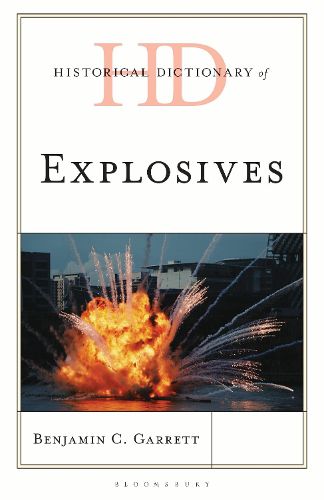Readings Newsletter
Become a Readings Member to make your shopping experience even easier.
Sign in or sign up for free!
You’re not far away from qualifying for FREE standard shipping within Australia
You’ve qualified for FREE standard shipping within Australia
The cart is loading…






The history of explosives is told through accidents, inventions, tragedies, and war. Historical Dictionary of Explosives describes this history, presenting the three types of explosives-chemical, mechanical, and nuclear-and how they were discovered, developed, and used. It gives their physical and chemical characteristics and profiles the men, women, companies, and collaborative efforts responsible for inventing or otherwise developing these explosives. It recounts selected events in which they were used both in warfare and for peaceful purposes such as tunneling and removing obstacles to navigation. It highlights disasters where human error, carelessness, disregard for personal safety, or unimagined circumstances led to explosions that killed many, injured more, and destroyed cities and ports. Misuse at the hands of terrorists is described, noting that such misuse has changed the way we board aircraft, enter sports venues, and access public buildings. It discusses attempts at both controlling their development and limiting their acquisition, stockpiling, testing, and use, noting that while these attempts are imperfect, they build hopes for enhanced international security.
Historical Dictionary of Explosives contains a chronology, an introduction, an extensive bibliography, and cross-referenced dictionary entries. This book is an excellent resource for students, researchers, and anyone wanting to know more about explosives.
$9.00 standard shipping within Australia
FREE standard shipping within Australia for orders over $100.00
Express & International shipping calculated at checkout
Stock availability can be subject to change without notice. We recommend calling the shop or contacting our online team to check availability of low stock items. Please see our Shopping Online page for more details.
The history of explosives is told through accidents, inventions, tragedies, and war. Historical Dictionary of Explosives describes this history, presenting the three types of explosives-chemical, mechanical, and nuclear-and how they were discovered, developed, and used. It gives their physical and chemical characteristics and profiles the men, women, companies, and collaborative efforts responsible for inventing or otherwise developing these explosives. It recounts selected events in which they were used both in warfare and for peaceful purposes such as tunneling and removing obstacles to navigation. It highlights disasters where human error, carelessness, disregard for personal safety, or unimagined circumstances led to explosions that killed many, injured more, and destroyed cities and ports. Misuse at the hands of terrorists is described, noting that such misuse has changed the way we board aircraft, enter sports venues, and access public buildings. It discusses attempts at both controlling their development and limiting their acquisition, stockpiling, testing, and use, noting that while these attempts are imperfect, they build hopes for enhanced international security.
Historical Dictionary of Explosives contains a chronology, an introduction, an extensive bibliography, and cross-referenced dictionary entries. This book is an excellent resource for students, researchers, and anyone wanting to know more about explosives.